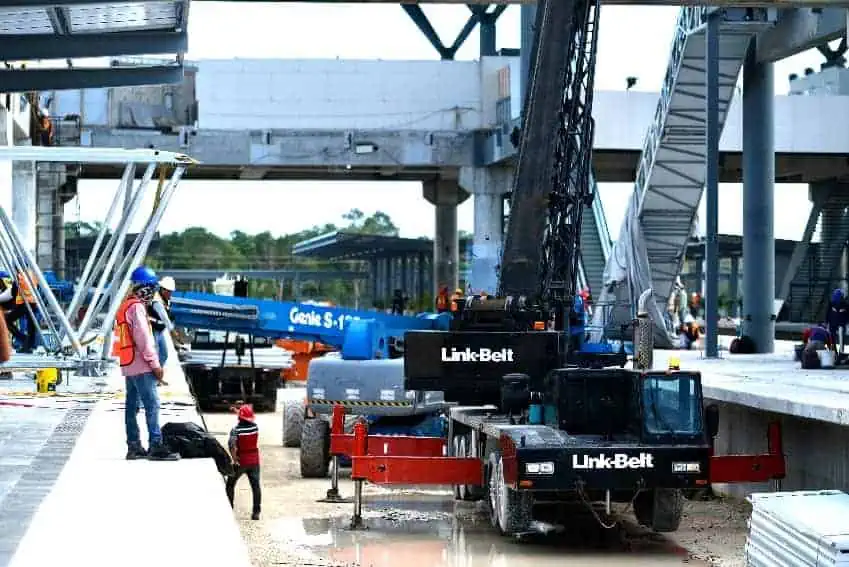Unemployment in Mexico declined to the lowest end-of-year level on record in December, according to official data, while the percentage of the economically active population engaged in informal work fell to the lowest level since 2020.
The national statistics agency INEGI reported Thursday that the unemployment rate was 2.6% in December, the lowest level since March, when an all-time low of just 2.4% of the economically active population was jobless.

The rate is the lowest end-of-year rate since INEGI began keeping comparable records in 2005.
The percentage of the economic active population in informal work was 53.6% in December, the lowest level since 2020, when the COVID-19 pandemic and associated restrictions left many informal workers without jobs.
An additional 1.2 million people in jobs
INEGI reported that 59.14 million people had jobs in December, up from 57.94 million in the same month of 2022. An increase in formal sector employment was responsible for the net growth in the number of people in jobs as the number of informal sector workers declined by close to 100,000 in the 12 months to the end of December.

Almost 60% of the 59.14 million workers are men, while just over 40% are women.
The economically active population — people aged 15 or over who are working or looking for work — was 60.73 million in December, up from 59.59 million a year earlier.
Just under 1.6 million people were unemployed last month, INEGI said, while 4.5 million were classed as underemployed, meaning they would like to work more hours. The latter figure accounts for 7.6% of the employed population.
The average unemployment rate across the 12 months of 2023 was 2.8%, the lowest average rate on record.
“Previously, the best annual performance was in 2022 with an average [unemployment rate] of 3.2% across 12 months,” said Gabriela Siller, director of economic analysis at Banco Base.
Which states have the lowest and highest unemployment rates?
The central state of Morelos has the lowest unemployment rate in the country with just 0.9% of the economically active population out of a job in December, according to INEGI.
Southern and southeastern states have the next lowest rates: Oaxaca, 1.2%; Chiapas, 1.4%, Yucatán, 1.4%; Campeche, 1.5%.
Aguascalientes has the highest unemployment rate, with 4.2% of the economically active population out of a job last month.

Coahuila has the second highest rate at 4%, followed by Tabasco, 3.9%; México state, 3.8%; and Zacatecas, 3.6%.
Most Mexicans work in the informal sector, but that could soon change
Of Mexico’s 59.1 million people with jobs, 31.7 million, or 53.6% of the total, work in the informal sector. Informal workers don’t pay income tax and don’t have access to formal employment benefits such as holiday pay and access to the Mexican Social Security Institute health care program.
The percentage of informal sector workers declined 1.3 percentage points from December 2022, INEGI said.
The only time when the percentage of people working in the informal sector was lower was in 2020, when an increase in unemployment among such workers early in the COVID pandemic caused a decline in the informality rate to 47.9%.
Siller said that the decline in the informal employment rate could be related to an increase in foreign investment as a result of nearshoring and a consequent increase in demand for formal sector workers.

She said that if Mexico takes better advantage of the nearshoring opportunity, the percentage of workers in the informal sector could go below 50% for the first time ever.
Still, the current “labor market balance” is “quite positive,” Siller said.
The Economy Ministry said in late 2023 that over US $106 billion in investment is expected to flow into Mexico in the next two to three years based on announcements made by foreign companies in the first 11 months of 2023.
Mexico’s largest employer is the service sector
Over 60% of Mexicans with jobs — 37.34 million people — work in the tertiary or service sector, INEGI data shows.
That figure represents an increase of over 982,000 compared to December 2022.
The secondary sector, which includes manufacturing and construction, employs 15.18 million people, or about 25% of workers, while 6.23 million Mexicans work in the primary or agriculture sector, a figure equivalent to just over 10% of the workforce.
The secondary sector added over 652,000 jobs in the past 12 months, while the primary sector lost more than 439,000. Some of the agricultural sector job losses were likely related to the drought conditions affecting a significant portion of Mexico’s territory.
The outlook for 2024
Banorte is forecasting that job creation will remain strong in the first half of the year, partially due to government spending as it pushes to complete infrastructure projects such as the Maya Train railroad.
The bank anticipates that unemployment will remain low in the first six months of 2024, but creep up in the second half of the year due to a “moderation in economic activity.”

It forecasts that the unemployment rate at the end of this year will be 3.4%.
Juan Carlos Alderete, Banorte’s executive director of economic research, predicted that job creation in the first half of 2024 will be concentrated in the secondary sector — especially construction — and the tertiary sector.
He said that “buoyant internal demand” and “structural changes” in the economy “mainly related to the nearshoring effect” supported job creation in 2023.
According to the results of Manpower Group’s latest Employment Outlook Survey, 48% of over 1,000 employers polled are planing to hire new workers in the first quarter of 2024, while only 14% expect to reduce their staff numbers.
With reports from El Financiero, El Economista and Milenio
